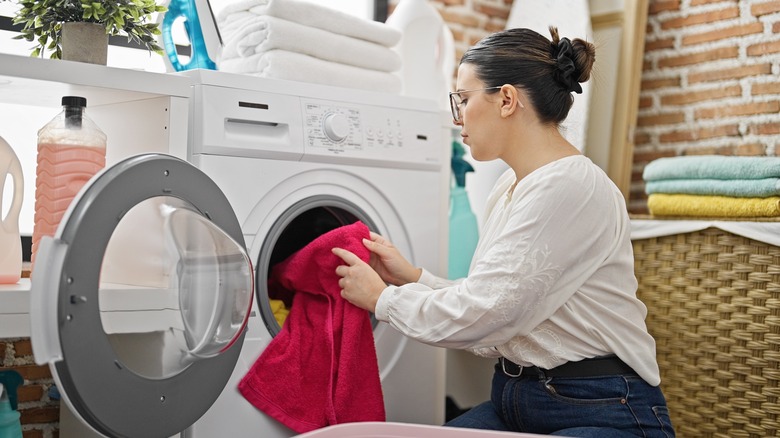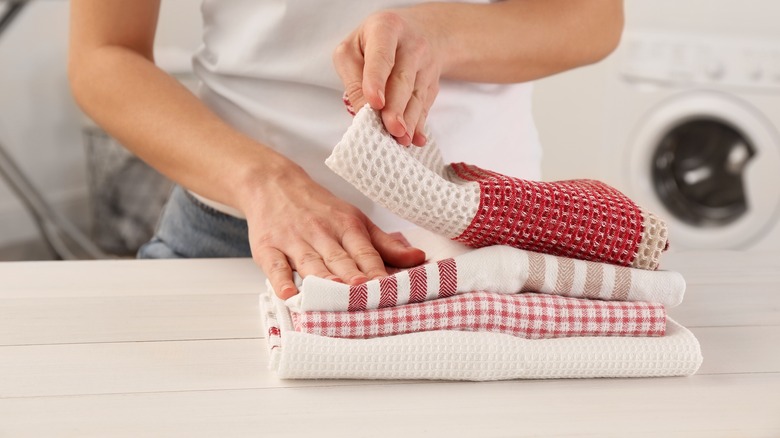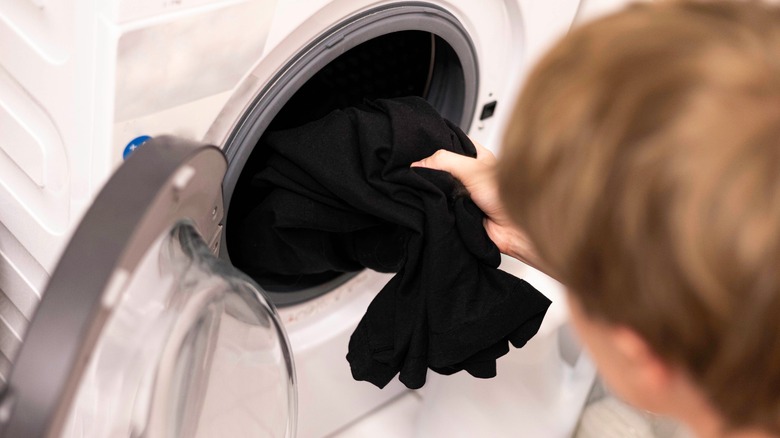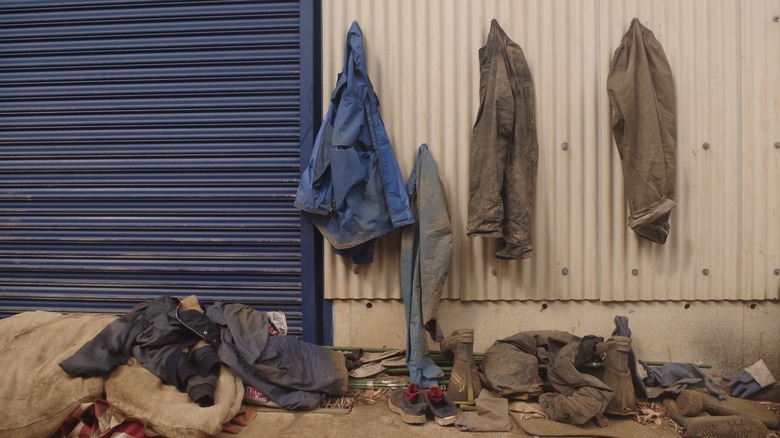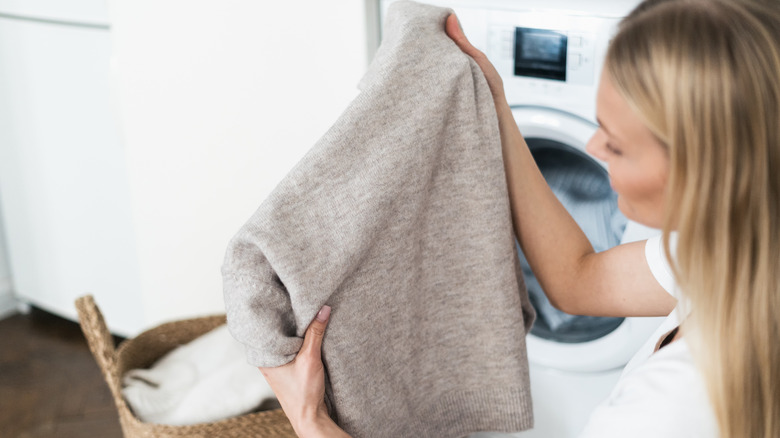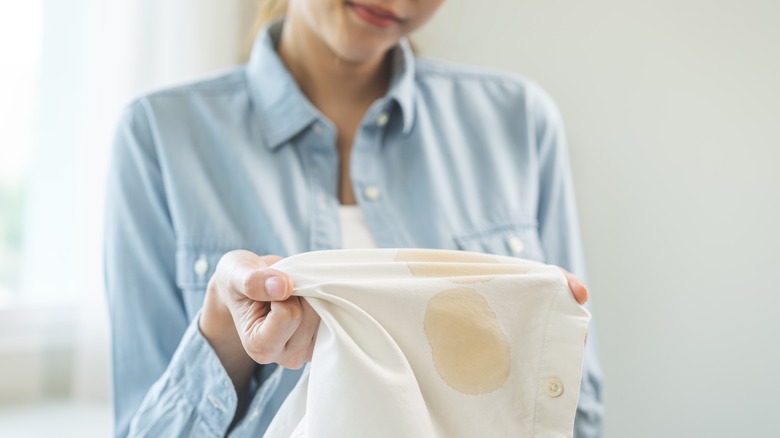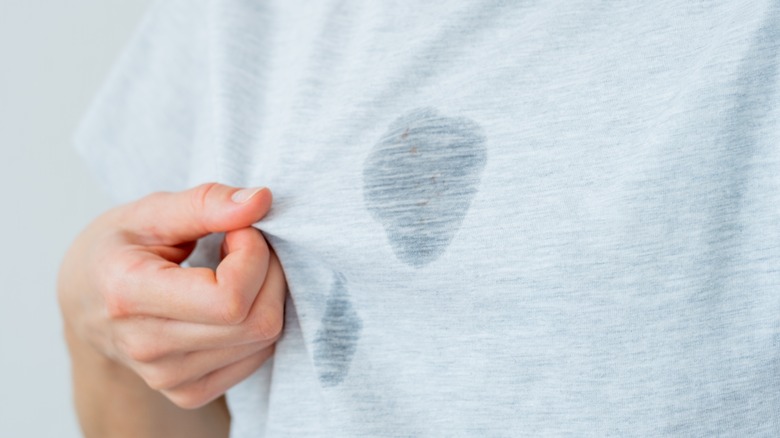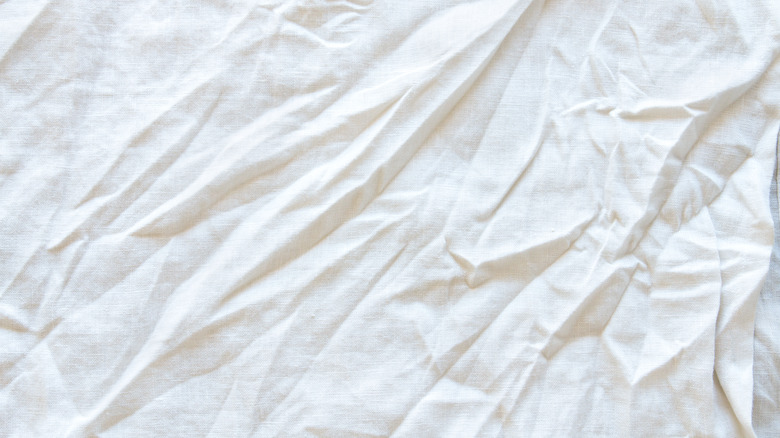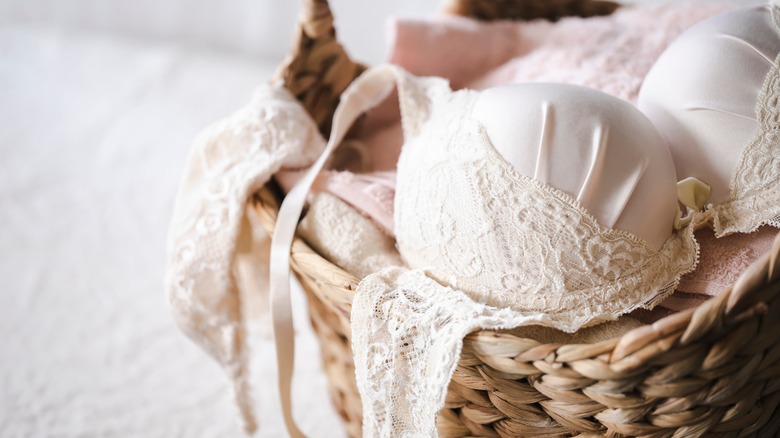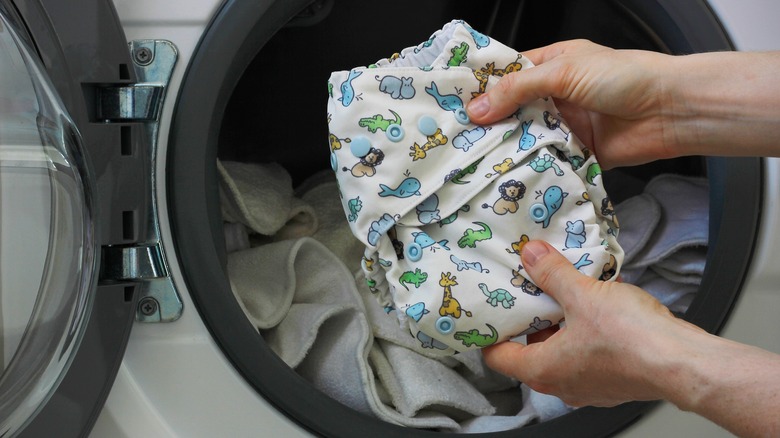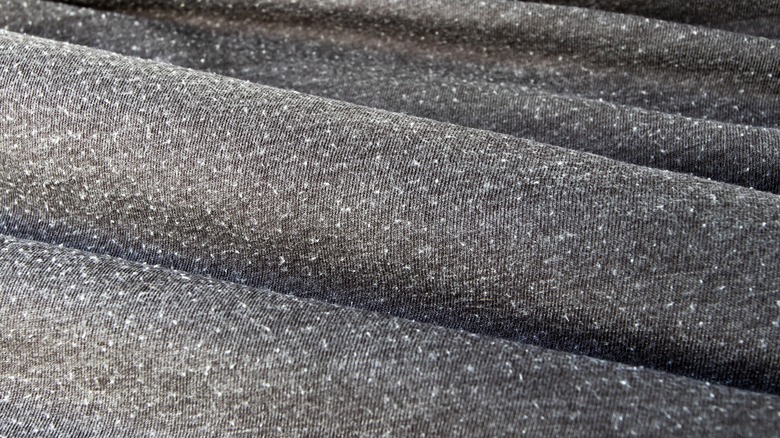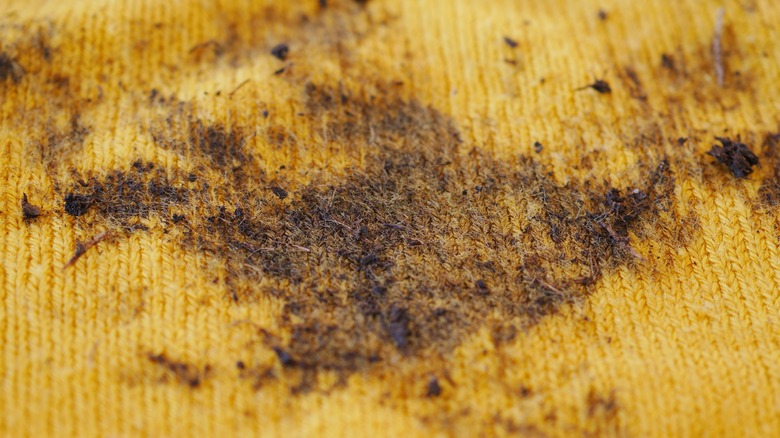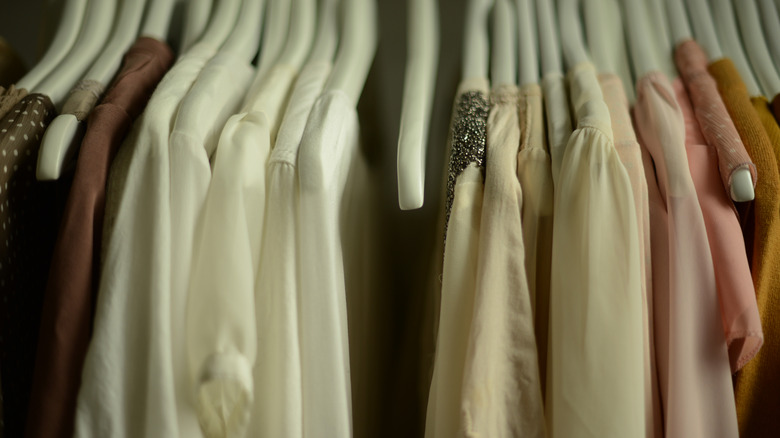The Types Of Laundry You Shouldn't Wash In Cold Water (& Which You Should)
According to data from the U.S. Bureau of Labor Statistics' Consumer Expenditures Survey, the average household spent over $2,000 on apparel and related services in 2023. That's — to put it simply — a lot of clothing. While it is necessary to purchase new items from time to time, whether you're replacing your essentials or simply trying out a new style, one of the easiest ways to cut down the amount you and your family spend on clothes and other textiles is to take the time to care for them properly. Laundering your fabrics according to their care instructions can help to extend their life, giving you the chance to get more use out of your items. While it might seem like the safe choice, tossing all of your items into the washing machine on a cold cycle could still be causing issues.
Unfortunately, however, it can be difficult to decode exactly how you should treat certain fabrics. Cut out tags and confusing care labels can leave you completely lost on how to properly care for your items. Washing your laundry in hot water is a well-known cause of damage, discoloration, and shrinking on certain fabrics, but using hot water can actually be more effective and even safer in certain situations. To help make laundry day a bit easier, we've created a handy guide that includes some of the situations where you should be washing your items with hot water — and when you absolutely should not. Overall, you should wash heavily-soiled or dirty items in hot water and delicate or dark-colored clothing on cold cycles.
Shouldn't wash in cold: Kitchen towels
Regardless of what you've been cooking in the kitchen, it's likely that your dish towels are carrying bacteria. While a wash on a cold cycle might still help to clear away surface debris and make them look clean, it's important to wash dish towels on a hot cycle instead to fully sanitize them. Most bacteria will die at around 150 degrees Fahrenheit, so the hot cycle on your washing machine should be enough to knock it out. After these high temperatures, you'll be able to rest assured that your kitchen towels are clean, safe, and ready to use.
Wash in cold: Bright or dark colors
Setting your washing machine to the cold cycle is one of the easiest ways to wash dark colors to keep them from fading. Because of this, it's best to err on the side of caution with the dark-colored and saturated pieces in your closet by cleaning them in cold water. Hot water can cause colors to bleed and fade, so unless you're dealing with heavily-soiled laundry, keep things cold. If you do have to wash a bright or dark item on a hot cycle, make sure you're washing it alone or with like colors so it doesn't ruin your other items.
Shouldn't wash in cold: Work clothes
If you work a hands-on job, it's likely that your uniform is an absolute magnet for stains and debris. Because of this, your uniform needs the added power of hot water and a heavy-duty cycle to get truly clean, so avoid using cold water. Thankfully, work uniforms, whether they're a chef jacket or carpenter pants, are typically designed to be durable, so they're not likely to see any negative impact from a harsher laundry cycle. As a general rule of thumb, however, always check care instructions before washing as certain materials could still shrink or fade with routine exposure to hot water.
Wash in cold: Wool
Wool is one of the fabrics that's most likely to shrink in the laundry, so whatever you do, avoid tossing wool items in the washing machine on a hot cycle. This is most commonly remembered when it comes to sweaters, but anything from wool hats to blankets should also be washed on cold to prevent shrinking. If your wool items are highly-soiled, it's a better idea to pre-treat them with DIY stain removers and tackle the issue with hand washing. Thankfully, wool is naturally stain-resistant, so you shouldn't run into many situations where it requires more intense washing.
Shouldn't wash in cold: Textiles used by someone sick
If you or someone in your home has a contagious illness, you likely already know that the best way to keep it from spreading is by disinfecting your surfaces. Many people forget, however, that this includes any fabric items that the person has been around as well. To disinfect fabric, it's recommended to wash it on the warmest setting recommended on the care instructions, which often is the hot cycle on your washing machine. This can include clothing worn by the sick person, but it's also important to factor in blankets and bedding. Avoid using cold water, as this won't thoroughly clean the garments.
Wash in cold: Items with protein-based stains
Protein-based stains can be tricky to remove, so your first instinct might be to pull out the big guns and toss them in the washing machine on a hot cycle. While this might be helpful for other stains, it's not going to be very beneficial in this situation. Protein-based stains from blood, milk, egg, mucus, or even avocado should be washed with cold water for the best results. If you're still having a hard time removing these stains, you can also use an enzyme-based cleaner to help break them down and make them easier to get out.
Shouldn't wash in cold: Clothes with grease stains
While protein-based stains should be washed out with cold water, you'll see better results when treating grease and oil stains with hot water. To properly launder these pieces, wipe away any excess oil, rub in some dish soap, and rinse the item in the washing machine on the warmest setting recommended on the care tag. There are, obviously, exceptions to this rule as some fabrics are too delicate to go through the hot cycle, but if the fabric is durable enough, this is the easiest way to ensure the item comes out clean.
Wash in cold: Items prone to wrinkling
Wrinkles can be removed from fabric with the help of steam, so washing them on the hot water cycle should accomplish the same task, right? Actually, this is incorrect. If you have items that are prone to wrinkling, it's best to wash them in cold water. Hot water makes the fabric more flexible and, as it gets tossed around in the washing machine, these high temperatures could cause creases. Keep the cycle as cold and as gentle as possible, then shake or lay out clothes after removing them from the machine to give them a chance to flatten before drying.
Shouldn't wash in cold: Pet bedding
Even if you regularly groom your pets, it's likely that they carry in quite a bit of dirt, mud, and debris. Because of this, it's best to wash their bedding and other items on the hottest cycle recommended on the care label. Cold water just wouldn't be as effective. This can apply to dog bed covers, blankets, and kennel pads, but it should also be noted if you're cleaning their toys or accessories. A hot cycle is the easiest way to lift all of that dirt, clear away any oils, and ensure that the item is fully disinfected when it comes out of the wash.
Wash in cold: Lingerie
It's generally recommended to wash bras and more delicate underwear by hand, but if you can't find the time, you should follow a few precautions before putting these items in the washing machine. First, clasp the hooks of any bras and put your items in a mesh laundry bag to give them an added layer of protection. From here, you can toss them in with your other, more delicate items. Run the machine on a cold, gentle cycle to minimize the chance of damage, then air dry your items so they're not exposed to high heat in the dryer.
Shouldn't wash in cold: Cloth diapers
Babies go through a ton of diapers in a day, so if you've opted for fabric options to cut down your waste, it's important that you know how to launder them correctly. During the first rinse of the diapers, you should start out with a quick speed wash cycle with cold water simply to clear anything stuck to the surface. After this, however, you should run a full cycle with hot water to disinfect the diapers and ensure they come out completely clean. Once the cycle is finished, let them air dry so they'll be ready to use again.
Wash in cold: Items that pill or shed
If you're looking to be more environmentally friendly with your washing, using cold water is the way to go. Clothes shed tiny fibers each time they're washed that either end up forming pills on fabric or wash away into the drain. Unfortunately, these little pieces of fabric are too small to be filtered out, and synthetic fabrics are a major contributor to microplastics in the ecosystem. While there's no way to completely stop this from happening, washing items that are prone to pilling in cold water whenever possible can help reduce the problem and minimize the formation of annoying pills.
Shouldn't wash in cold: Items that are heavily soiled
Because hot water packs more of a punch when cleaning, the general rule of thumb is to use it whenever items are heavily soiled. Combined with pretreatment, you should be able to get out just about any stain with a hot wash cycle, whereas cold water might not be as effective. There are, of course, exceptions to this rule, as it doesn't matter if you removed a stain from your favorite shirt if it's completely unwearable when you're done laundering it. Check care instructions when possible, and use your best judgment to determine if fabrics are heavy duty enough to withstand high temperatures.
Wash in cold: Delicate fabrics
To help reduce the risk of damage, you should use cold water to wash more delicate fabrics. This will be noted on the care label, but in situations where you're unsure, a lower temperature is usually the safe bet. Delicate fabrics include the types used to make more formal pieces, like lace and silk, but it's also important to stick with cold when it comes to rayon, athletic wear, and swimsuits. This will help to ensure the fibers don't break or get damaged, helping you to extend the life of your favorite items.
